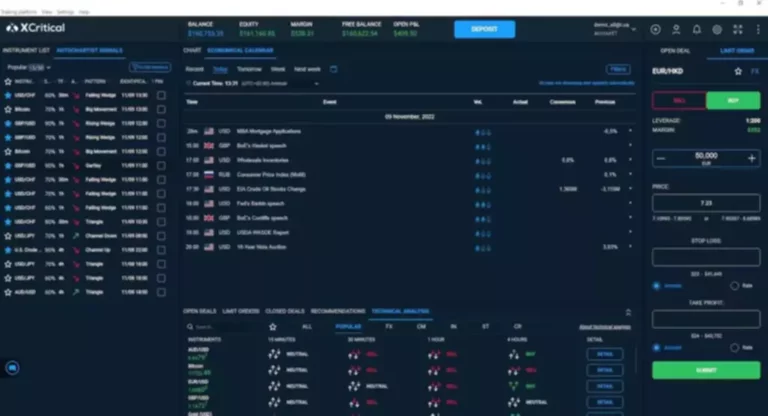To use the Binance Bridge, for instance, you will first select the chain you’d prefer to bridge from and specify the quantity. After the crypto is sent to the tackle through the time window, Binance Bridge will ship you an equal quantity of wrapped tokens on the opposite blockchain. If you want to convert your funds back, you merely undergo the reverse process. To understand what a blockchain bridge is, you have to first understand what a blockchain is. Bitcoin, Ethereum, and BNB Smart Chain are a variety of the major blockchain ecosystems, all counting on different consensus protocols, programming languages, and system guidelines. People make use of blockchain bridges to wrap other cryptocurrencies to be used on other networks.

As a result of this domination, there’s little room out there for model spanking new companies to check their techniques and get a foothold within the current competition. Manual checkpoints are similar to a trusted model as it relies upon upon a third party, i.e., the officers, for its operations. As a consumer, you trust the officials to make the right selections and use your non-public information appropriately. Get familiar with the terms associated to blockchain with Blockchain Basics Flashcards. Since the Bitcoin whitepaper was launched in 2008, there was super innovation within the area and widespread, almost mainstream, adoption. While every year in crypto is unique, 2021 modified the ecosystem in ways in which have folks excited about crypto’s seemingly limitless future.
Advantages Of Bridges
But, what do you do if you need to make an identical trade to make use of a special blockchain? Let’s say you want to trade ETH on Ethereum Mainnet for ETH on Arbitrum(opens in a new tab). Like the currency exchange we made for EUR, we want a mechanism to move our ETH from Ethereum to Arbitrum. In this case, Arbitrum has a local bridge(opens in a new tab) that can transfer ETH from Mainnet onto Arbitrum. But, generally, we see different varieties of bridges due to what they connect and their main usability.
To consider trustless bridges based mostly on other components, we must break them down into generalized message passing bridges and liquidity networks. Blockchains exist in siloed environments, meaning there is no means for blockchains to trade and talk with different blockchains naturally. As a end result, while there could be significant exercise and innovation inside an ecosystem, it’s limited by the dearth of connectivity and interoperability with other ecosystems.

Dive deeper into the area of web3 and find out the significance of a blockchain bridge for the longer term now. Developers can also rely on the basics of how blockchain bridges work to attain promising value benefits. The functionalities of a blockchain bridge built-in into dApps may assist in attaining the utilities and benefits of different blockchain networks. With the help of interoperability, scalability and utility, bridges can encourage builders to come up with progressive designs for decentralized purposes. The second variant amongst bridges for blockchain networks would refer to a trustless blockchain bridge. As in comparability with a trusted blockchain bridge, the trustless variant leverages algorithms and sensible contracts over a blockchain network.
What Are The Best Blockchain Bridges?
The distinct traits of the blockchain networks separate them from each other and create distinct communities. For example, every blockchain network contains a consensus model, which is an integral component for making certain that every one nodes can agree on specific transactions. The restriction on interactions between totally different blockchain networks creates limits for decentralization, the core precept of blockchain know-how. A blockchain bridge serves as the best blockchain bridges resolution for interoperability amongst various kinds of blockchain networks. It opens up the scope for applications primarily based on one blockchain network to use the assets of one other blockchain community. To establish belief between blockchains and make two-way communication possible, we’d like something within the center, one thing that can bridge the hole between these blockchains.

Blockchain bridges can offer higher alternatives for rising the variety of customers and more alternatives for improvement and switch of assets. Several types of blockchain bridges are used to enable cross-chain transactions between different blockchain networks. Some of the most typical kinds of blockchain bridges include wrapped tokens, sidechains and atomic swaps. Blockchain bridges supply an answer to this challenge by creating a connection between completely different blockchain networks. By enabling cross-chain transactions, blockchain bridges expand the possibilities of blockchain know-how and facilitate the seamless switch of value and knowledge across totally different blockchain networks.
Interoperability Unlocks Innovation
A one-way bridge means customers can solely bridge belongings to one destination blockchain but not again to its native blockchain. It also supplies common message bridging for instances similar to cross-chain DEX and NFTs. Other exciting options embody secured bridge node service, versatile safety fashions, and native gasoline token unwrapping. However, bridges use different mechanisms, or actors, that play the role of verifiers between blockchains to enable communication and overcome the belief boundaries.
Unfortunately, their insurance coverage mechanisms are often reflexive; if a protocol token is used as collateral, there’s an assumption that the dollar worth of that token will be excessive sufficient to make users entire. Furthermore, if the collateral asset is completely different from the insured asset, there’s also a dependency on an oracle value feed, so the security of the bridge may degrade to the safety of the oracle. If not trusted, these bridges are also the least capital environment friendly as a outcome of they should scale collateral proportional with the financial throughput they’re facilitating.
However, all blockchains develop in isolated environments and have totally different guidelines and consensus mechanisms. This means they can’t natively talk, and tokens can not transfer freely between blockchains. Alternatively, L1s like Solana and Avalanche are designed differently to enable higher throughput however at the price of decentralization. Furthermore, the most effective bridges will be the most secure, interconnected, fast, capital-efficient, cost-effective, and censorship-resistant. These are the properties that need to be maximized if we need to understand the imaginative and prescient of an “internet of blockchains”. There is often a group of validators that monitor a “mailbox” tackle on the source chain and, upon consensus, carry out an action on the vacation spot chain.
Sidechain bridges connect the father or mother blockchain to its child sidechain, enabling interoperability between the two. They are wanted because the parent and sidechain may have completely different consensus mechanisms. One example is xDai Bridge, which connects the Ethereum mainnet to Gnosis Chain (formerly xDai blockchain), an Ethereum-based stable cost sidechain. XDai is secured by a set of validators totally different from those that maintain the Ethereum community. Atomic swaps are trade facilitators that allow two parties to switch tokens throughout several blockchains. This type of method doesn’t necessitate using a centralized third party to allow offers.
As a outcome, there is not any direct communication or token transaction between blockchains. Blockchain bridges, then again, allow the transfer of tokens and knowledge from one chain to a different. Formerly often recognized as Fantom Anyswap, Multichain positions itself as a cross-chain router protocol, enabling the flow of knowledge and assets throughout completely different blockchain networks.
What Are The Biggest Challenges For Cross-chain Applications?
Here is an outline of the notable blockchain bridge variants you have to use for transferring assets and information between blockchain networks. Cross-chain technology enables the seamless transfer of assets between blockchain networks, lowering site visitors and gas costs. It additionally facilitates the collaboration of builders from varied networks to establish new person platforms.
Furthermore, a trustless bridge offers complete transparency by leveraging the advantages of mathematics, laptop science and cryptography for security of transactions. On prime of it, users have complete control over their belongings at totally different occasions. 2021 was the year of the L1s – which resulted in lots of predicting a multi-chain future for crypto, versus a winner take all stance that many had previous to the rise of these blockchains.
- If you personal bitcoin however wish to take part in DeFi activity on the Ethereum network, a blockchain bridge permits you to do that without selling your bitcoin.
- The Nodes are continually verifying new blocks of data based on that mechanism.
- As those IOUs find yourself in liquidity pools elsewhere the effects ripple via the broader crypto ecosystem.
- Generally, purposes designed for one network solely work inside that community, limiting their potential for broader adoption.
- Crosschain DEXs like this will additionally profit users who don’t want to transfer their tokens to a brand new chain at all.
This is akin to a peer-to-peer community the place each node acts as a “router” that holds an “inventory” of assets of both the supply and vacation spot chain. These networks usually leverage the safety of the underlying blockchain; by way of the usage of locking and dispute mechanisms, customers are guaranteed that routers can’t run away with consumer funds. Because of this, liquidity networks like Connext are doubtless a safer choice for users who’re transferring giant amounts of value. The fundamentals of a blockchain bridge must have piqued your interest in how they work and the top successful examples. You can discover solutions to “how blockchain bridges work” by reflecting again on the basics of blockchain. Blockchain networks embrace a world neighborhood of nodes interacting with other in a shred setting for administration, validation and storage of financial transactions and information exchanges.
If Chain A held fifteen tokens after which transferred 5 tokens to Chain B, Chain A would still have fifteen tokens (with 5 tokens locked), but Chain B would have 5 extra. Various initiatives have been developed over time to attach networks, permitting for the straightforward flow/exchange of knowledge from one community to another whereas additionally increasing the adoption fee. The Synapse protocol enables secure cross-chain communication via its common interoperability model. This platform was developed by the Germany-based Tixl organization, which rebranded as the Autobahn Network in March 2022.

Recent Comments